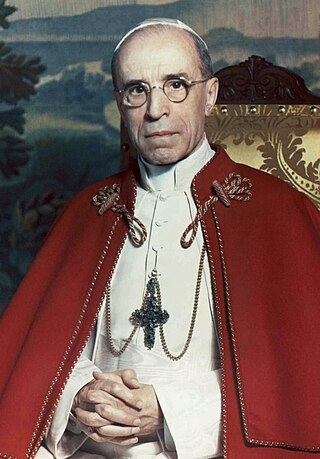
Pope Pius XII was head of the Catholic Church and sovereign of the Vatican City State from 2 March 1939 until his death in October 1958. Before his election to the papacy, he served as secretary of the Department of Extraordinary Ecclesiastical Affairs, papal nuncio to Germany, and Cardinal Secretary of State, in which capacity he worked to conclude treaties with various European and Latin American nations, including the Reichskonkordat treaty with the German Reich.

The Lateran Treaty was one component of the Lateran Pacts of 1929, agreements between Fascist Italy under Victor Emmanuel III and Benito Mussolini and the Holy See under Pope Pius XI to settle the long-standing Roman question. The treaty and associated pacts were named after the Lateran Palace where they were signed on 11 February 1929, and the Italian Parliament ratified them on 7 June 1929. The treaty recognised Vatican City as an independent state under the sovereignty of the Holy See. Fascist Italy also agreed to give the Catholic Church financial compensation for the loss of the Papal States. In 1948, the Lateran Treaty was recognized in the Constitution of Italy as regulating the relations between the Italian Republic and the Catholic Church. The treaty was significantly revised in 1984, ending the status of Catholicism as the sole state religion.

Pope Benedict XV, born Giacomo Paolo Giovanni Battista della Chiesa, was head of the Catholic Church from 1914 until his death in January 1922. His pontificate was largely overshadowed by World War I and its political, social, and humanitarian consequences in Europe.

Pope Pius XI, born Ambrogio Damiano Achille Ratti, was the head of the Catholic Church from 6 February 1922 to 10 February 1939. He also became the first sovereign of the Vatican City State upon its creation as an independent state on 11 February 1929. He remained pope until his death in February 1939.
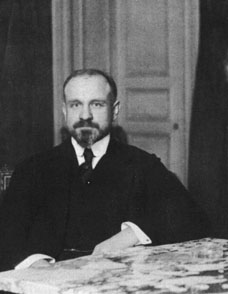
Bernardino Nogara was the financial advisor to the Vatican between 1929 and 1954, appointed by Pope Pius XI and retained by Pope Pius XII as the first Director of the Special Administration of the Holy See. According to historian John F. Pollard, Nogara laid "the foundations" for "one of the biggest pillars for the Vatican's post-Second World War financial strength."
L'Osservatore Romano is the daily newspaper of Vatican City State which reports on the activities of the Holy See and events taking place in the Catholic Church and the world. It is owned by the Holy See but is not an official publication, a role reserved for the Acta Apostolicae Sedis, which acts as a government gazette. The views expressed in the Osservatore are those of individual authors unless they appear under the specific titles "Nostre Informazioni" or "Santa Sede".

Pietro Gasparri was a Roman Catholic cardinal, diplomat and politician in the Roman Curia and the signatory of the Lateran Pacts. He served also as Cardinal Secretary of State under Popes Benedict XV and Pope Pius XI.

The papal conclave held from 2 to 6 February 1922 saw Cardinal Achille Ratti elected to succeed Benedict XV, who had died on 22 January 1922. It took fourteen ballots for the 53 of the 60 cardinals assembled in the Sistine Chapel to elect a new pope. Ratti took the name Pius XI and immediately revived the traditional public blessing from the balcony, Urbi et Orbi, which his predecessors had eschewed since the loss of Rome to the Italian state in 1870.

Rafael Merry del Val y Zulueta, was a Spanish Catholic bishop, Vatican official, and cardinal.
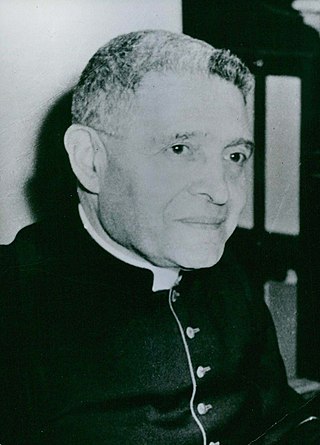
Domenico Tardini was a longtime aide to Pope Pius XII in the Secretariat of State. Pope John XXIII named him Cardinal Secretary of State and, in this position the most prominent member of the Roman Curia in Vatican City.
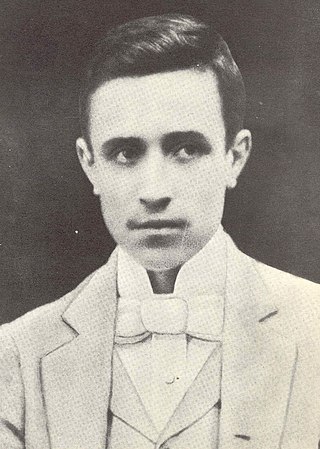
Eugenio Maria Giuseppe Giovanni Pacelli was born March 2, 1876, to Filippo Pacelli and Virginia (Graziosi) Pacelli, in Rome, where he spent his childhood. He was ordained as a priest on April 2, 1899.

The Bank of the Holy Spirit was a bank founded by Pope Paul V on December 13, 1605. The bank was the first central bank in Europe at a level above city-states, the first public deposit bank in Rome, and the oldest continuously operating bank in Rome until its merger in 1992.

Of the 65 cardinals eligible to participate, 57 served as cardinal electors in the 1914 papal conclave. Arranged by region and within each alphabetically. Eight did not participate in the conclave. William Henry O'Connell and James Gibbons arrived too late from the United States, as did Louis-Nazaire Bégin from Quebec. Sebastiano Martinelli, Franziskus von Sales Bauer, Kolos Ferenc Vaszary, Giuseppe Antonio Ermenegildo Prisco, and François-Virgile Dubillard were too ill or too frail.

Angelo Amato, S.D.B. was an Italian cardinal of the Catholic Church who served as the Prefect of the Congregation for the Causes of Saints between 2008 and 2018. He served as Secretary of the Congregation for the Doctrine of the Faith from 2002 to 2008 and became a cardinal in 2010.
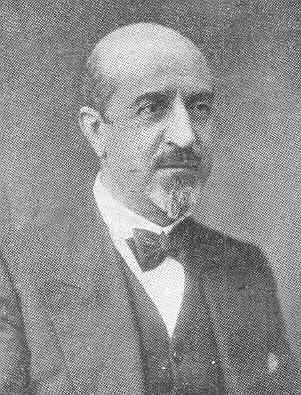
Francesco Pacelli, Noble of Acquapendente and Noble of Sant'Angelo in Vado, was an Italian lawyer and the elder brother of Eugenio Pacelli, who would later become Pope Pius XII. He became a lay canon lawyer and the legal advisor to Pope Pius XI, acted as a legal advisor to Pope Pius XI; in this capacity, he assisted Cardinal Secretary of State Pietro Gasparri in the negotiation of the Lateran Treaty in 1929 with Benito Mussolini, which established the independence of Vatican City, bringing an end to the Roman Question.

Eugenio Pacelli was a nuncio in Munich to Bavaria from 23 April 1917 to 23 June 1920. As there was no nuncio to Prussia or Germany at the time, Pacelli was, for all practical purposes, the nuncio to all of the German Empire.
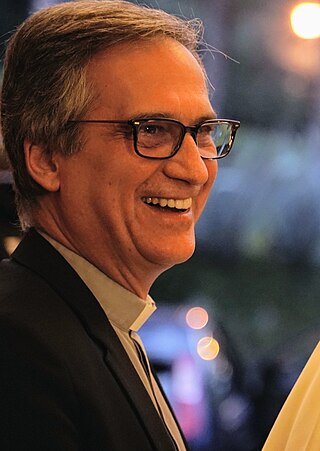
Dario Edoardo Viganò is an Italian Catholic priest, writer and university teacher. He was named Director of Vatican Television Center in 2013. He served as the first Prefect of the newly established Secretariat for Communications from 27 June 2015 to 21 March 2018, resigning "a week after his mishandling of a letter from retired Pope Benedict XVI provoked a global outcry".
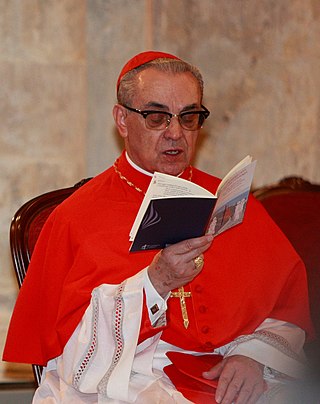
Santos Abril y Castelló is a Spanish prelate of the Catholic Church. After a career in the diplomatic corps of the Holy See, he held a number of positions in the Roman Curia and from 2011 to 2016 was Archpriest of the Basilica of Santa Maria Maggiore.
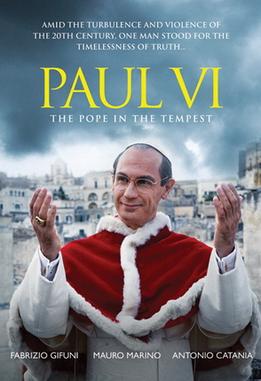
Paul VI: The Pope in the Tempest is a 2008 Italian biographical drama television movie directed by Fabrizio Costa. The film is based on real life events of Roman Catholic Pope Paul VI.
Events in the year 1930 in Vatican City.


















